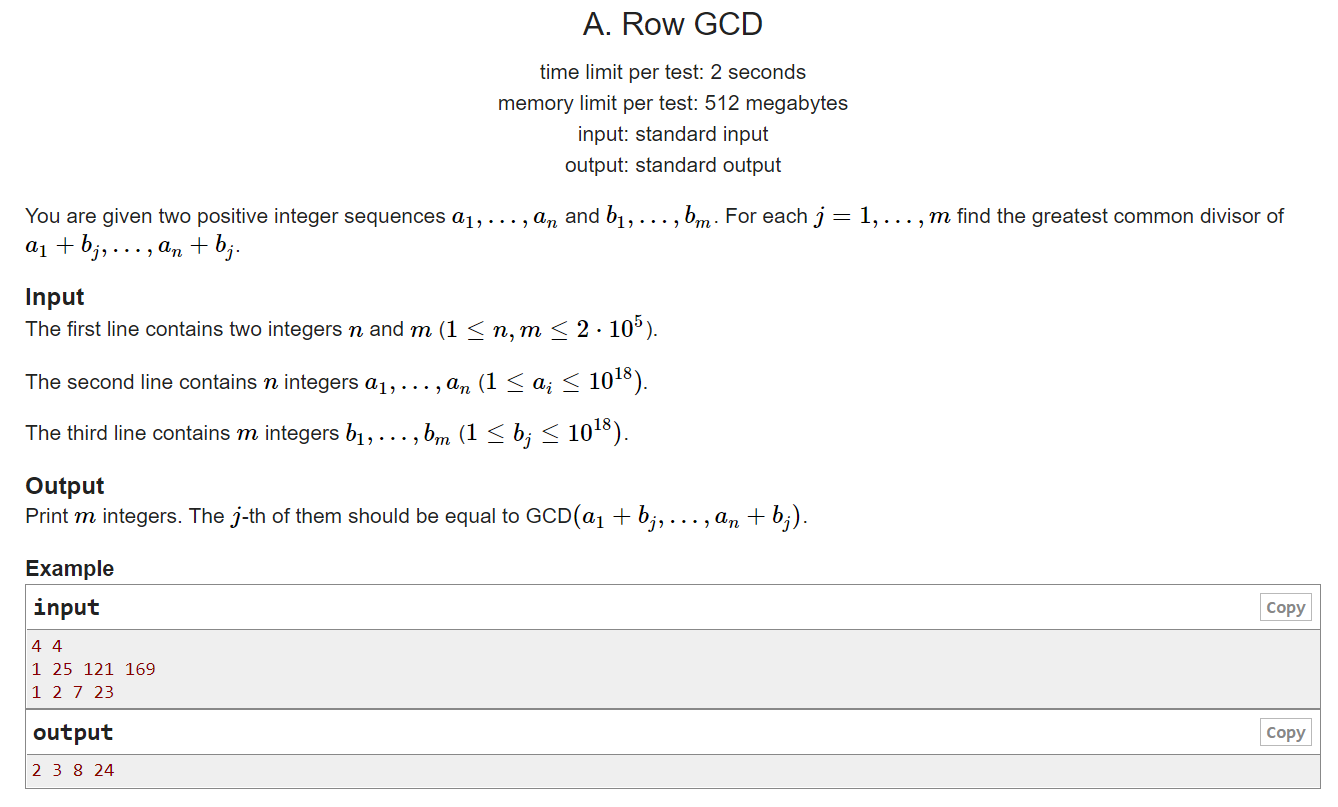
这题一开始看到解多元方程组然后就直接想到中国剩余定理去了,事实上我们应该想到辗转相除法会把这里每个数多出来的数减掉,然后模拟一下辗转相除法,拿最小的数去把其他的数多出来的消掉,这样每次有n-1个数是固定的了。
对于中国剩余定理和扩展CRT都是要保证每一个方程组中的模数和余数是知道的,我们才能去算那个类lcm,此题如果列成方程组的话未知数过多,显然不是CRT的解法
1 #include "bits/stdc++.h" 2 using namespace std; 3 typedef long long LL; 4 const int MAX=2e5+5; 5 LL n,m,a[MAX],b[MAX],c; 6 inline LL gcd(LL x,LL y){ 7 return (y==0?x:gcd(y,x%y)); 8 } 9 int main(){ 10 freopen ("a.in","r",stdin); 11 freopen ("a.out","w",stdout); 12 LL i,j; 13 scanf("%lld%lld",&n,&m); 14 for (i=1;i<=n;i++) scanf("%lld",a+i); 15 for (i=1;i<=m;i++) scanf("%lld",b+i); 16 sort(a+1,a+n+1); 17 for (i=2;i<=n;i++) a[i]-=a[1]; 18 for (c=a[2],i=3;i<=n;i++) 19 c=gcd(c,a[i]); 20 for (i=1;i<=m;i++) 21 printf("%lld ",gcd(c,a[1]+b[i])); 22 return 0; 23 }